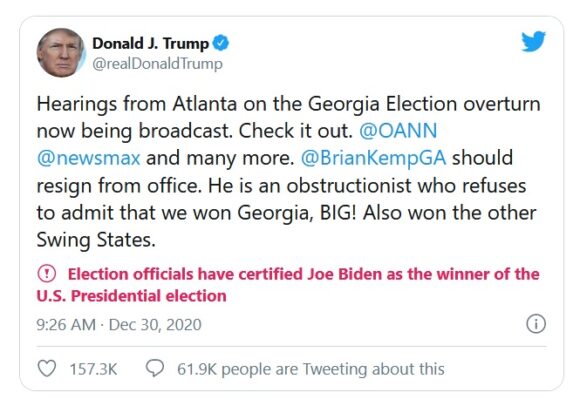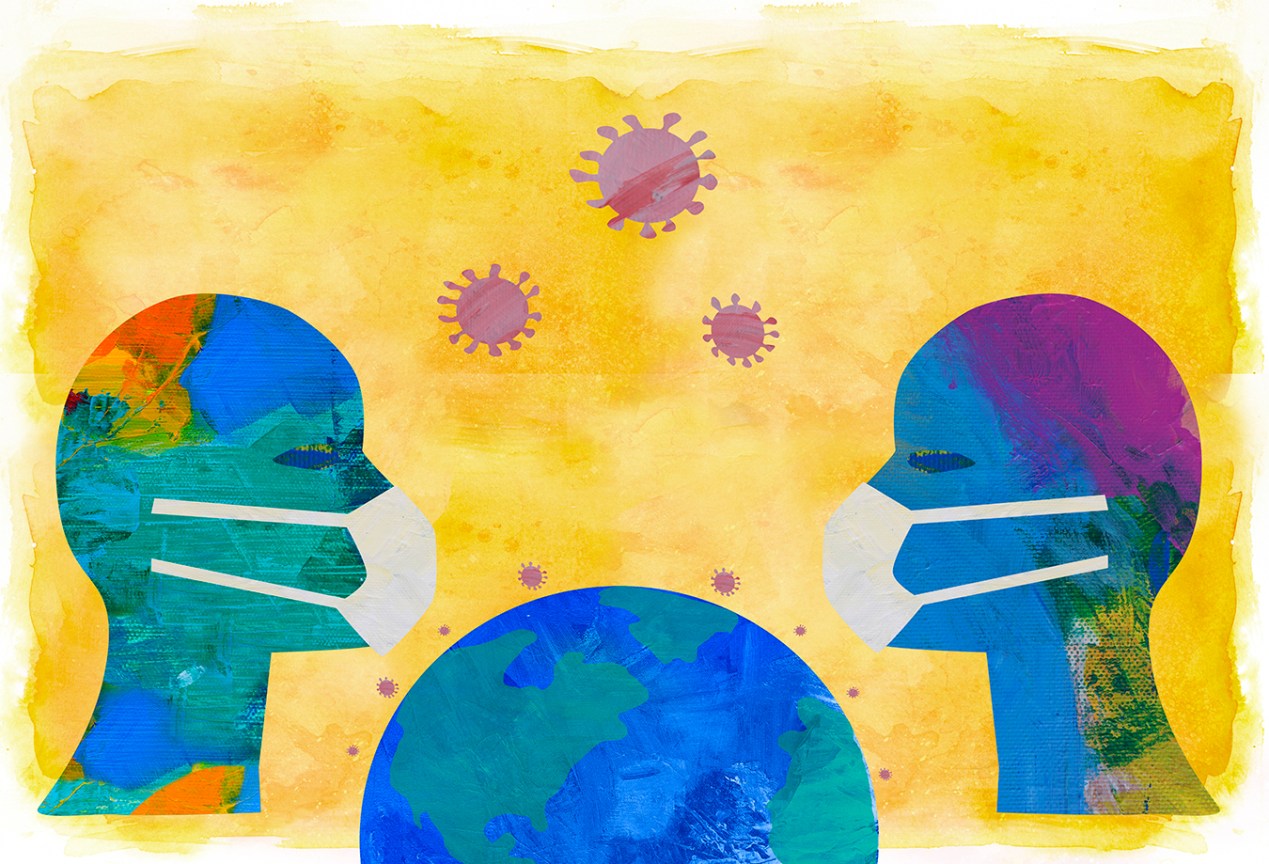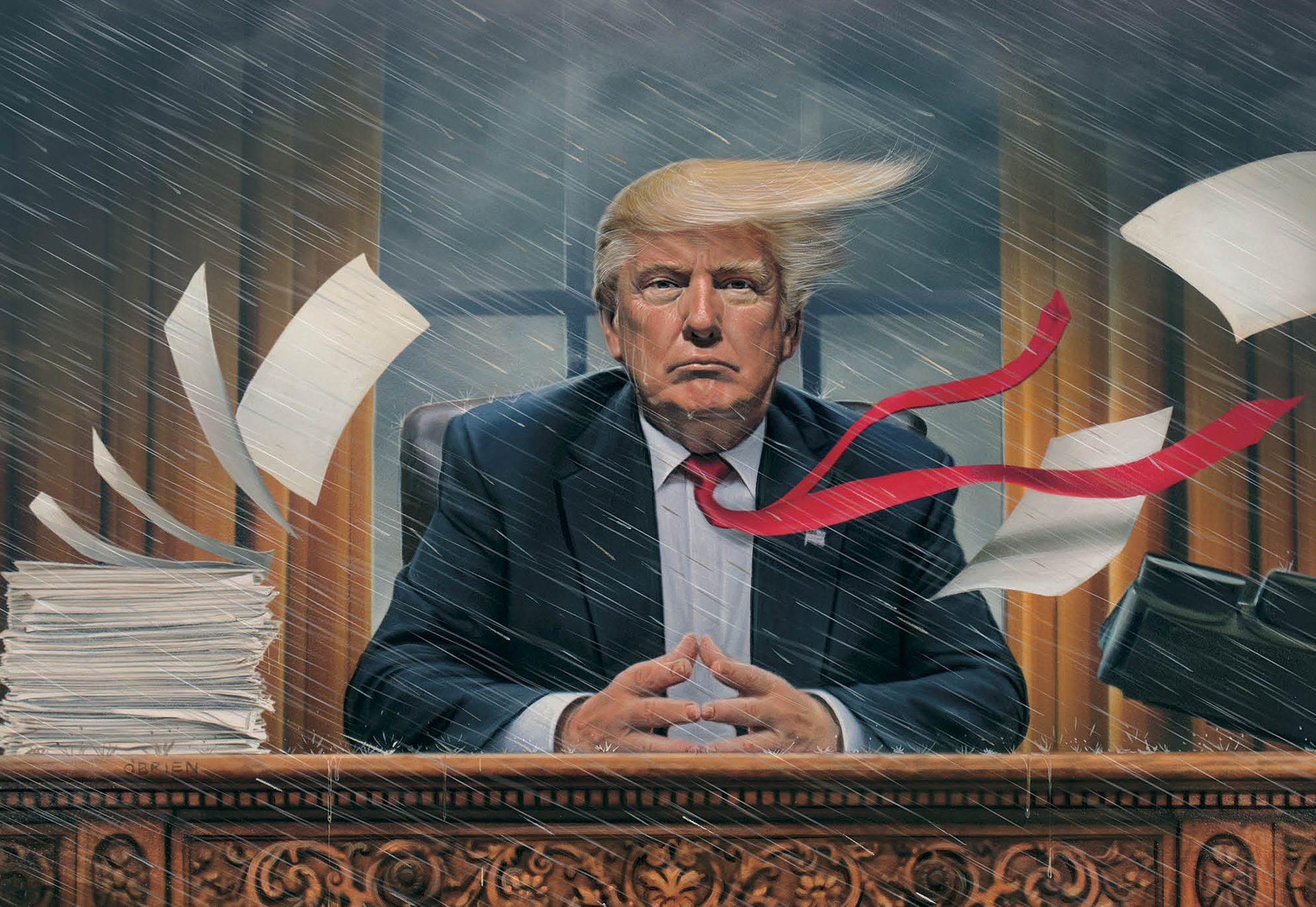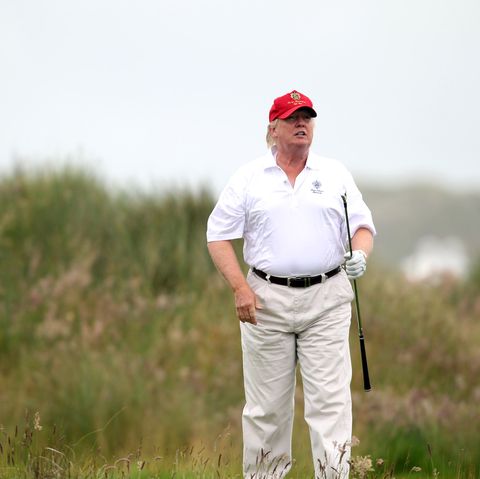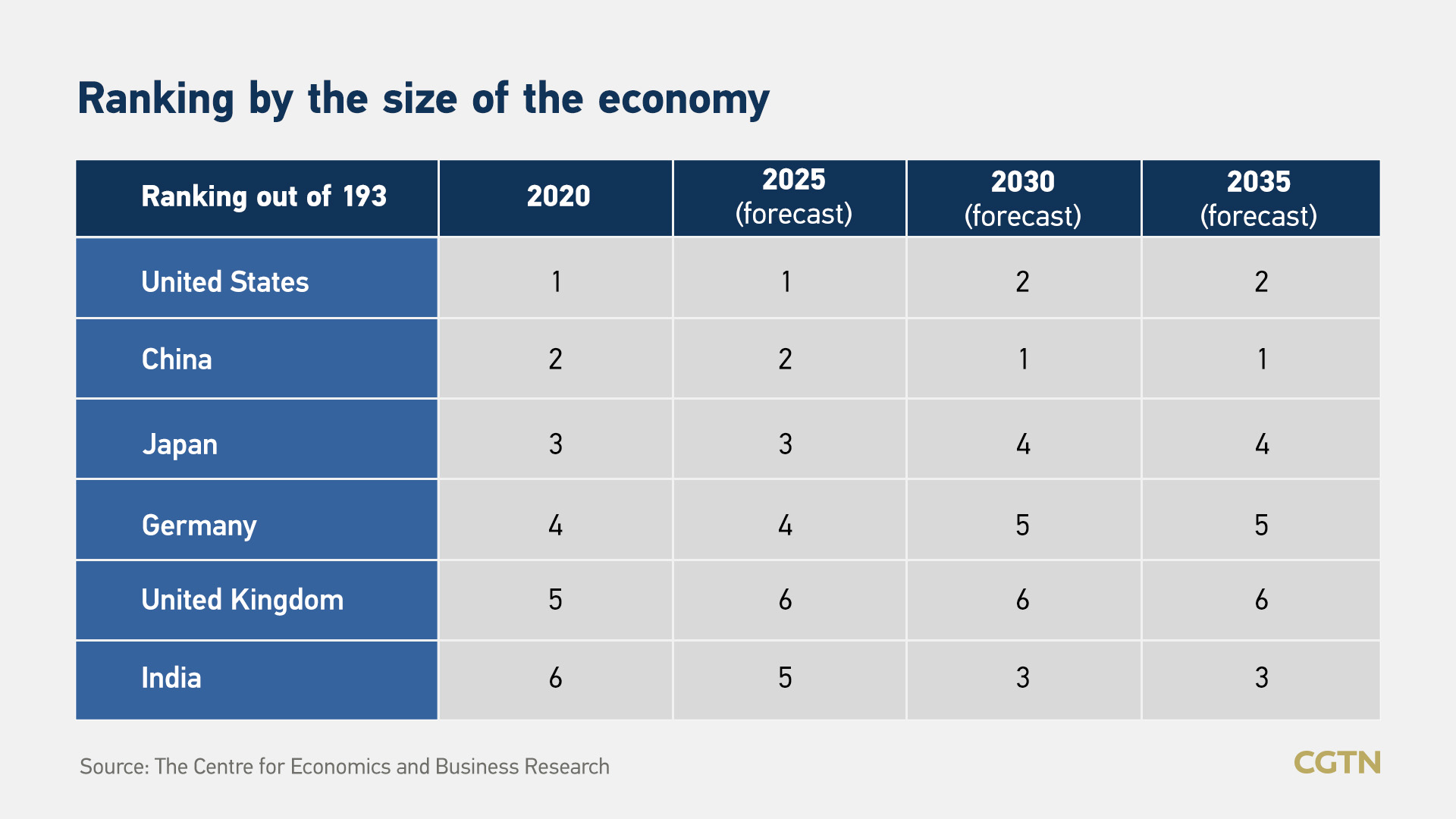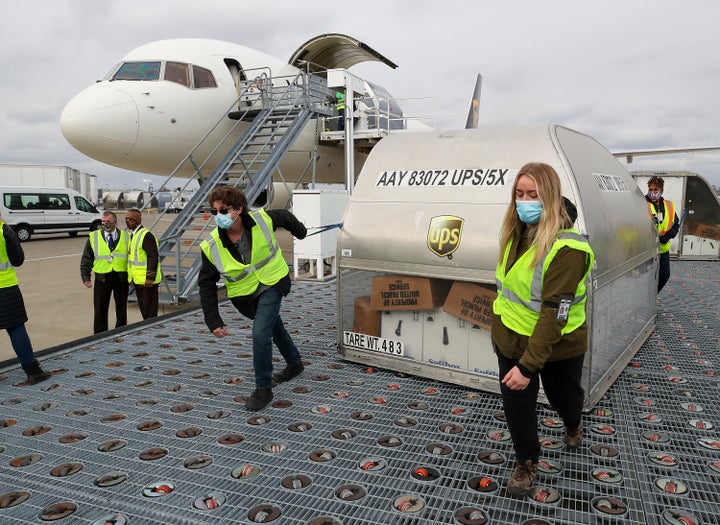
Operation Warp Speed put a big focus on the production and distribution of the COVID-19 vaccines but left planning for the “last mile” — getting shots into arms — mostly to state and local authorities.
Dear Commons Community,
CNN, MSNBC and other media have been reporting all week about the lack of Trump administration planning and the failure of state and local governments to keep a COVID-19 vaccination schedule that originally promised 20 million people vaccinated by the end of this year. As of right now, the best estimate is that about 2 million people have been vaccinated. Here is a recap of where the country is regarding coronavirus and vaccinations courtesy of multiple media sources.
CNN reported yesterday that the US hit a new dismal daily coronavirus record, with 3,725 deaths recorded. What was once an unthinkable number is now a possible precursor to what medical experts are warning will be an “awful” rest of the winter. One epidemiologist said the US is now past the point of waves and spikes and is in the middle of a “viral tsunami.” The new Covid-19 variant first found in the UK has also made it to the US, with a case recorded in Colorado. The new variant spreads more quickly but does not appear to be more deadly. Meanwhile, health officials are concerned over the slow rollout of tens of millions of vaccine doses. The federal government’s Operation Warp Speed promised that 20 million doses would be administered before January 1, but only 11 million have been distributed, and just over 2 million have actually been given to people according to the latest figures from the U.S. Centers for Disease Control and Prevention.
Even allowing for a lag in the reporting of data, the final numbers for 2020 will be well short of the administration’s goal, as Operation Warp Speed officials have acknowledged.
The question going forward is what the failure represents. Is it nothing more than the predictable, ultimately temporary early difficulties that come with such a complex and massive undertaking — or a sign that vaccine distribution is about to become a major failure, just like testing and the distribution of personal protective equipment were earlier in the pandemic?
Over the past week, HuffPost put that question to a group of experts, including some who have been working with federal, state and local officials throughout the COVID-19 crisis. And nobody seemed quite sure of the answer.
Most said patience was important. Vaccine distribution was bound to be difficult in the United States because of our chronically underfunded public health infrastructure, our dispersed and diverse population, and the way we divide power between federal and state government. Not surprisingly, the country leading the world in per capita COVID-19 vaccinations is Israel, which has none of those problems.
But the U.S. is also behind the United Kingdom, and now that vaccinations have started in the European Union as well, it’s likely other countries will overtake us. A big reason, experts agree, is that the overwhelming focus of Operation Warp Speed was on producing the vaccines and shipping them from factories, and not what comes after.
The ‘Last Mile’ Of Distribution May Be The Toughest
The Trump administration left most of the planning for the “last mile” of distribution almost entirely to state and local public health departments, which were already overwhelmed dealing with the pandemic. And although those agencies are about to get a funding boost, thanks to the COVID-19 relief package that Congress passed and Trump signed this week, the agencies needed that money months ago.
“We’ve had a slow start on distribution in most of the U.S. ― a result of insufficient support and belated attention to the nitty-gritty of getting the vaccines from the freezers into people’s arms,” said Joshua Michaud, associate director for global health policy at the Henry J. Kaiser Family Foundation.
Jason Schwartz, a health policy professor at Yale specializing in vaccine policy, was even blunter. “It’s been striking to me, for months, that there hasn’t been every bit as much urgency and attention to how we actually get a vaccine to a few hundred million people … as there has been to the research and development of the vaccine itself,” he said.
Some parts of the country are doing better than others, as a recent state-by-state survey from Bloomberg found.
West Virginia, for example, has already delivered shots to its entire nursing home population, according to officials there. In Maine, a state whose vaccination rate is also among the nation’s best, the detailed, ready-to-go delivery plans included acquiring dry ice from seafood supply companies. In Florida, by contrast, seniors in one county are camping out overnight on lawn chairs because officials there decided to offer vaccines through mass clinics on a first-come, first-serve basis.
States will learn best practices from each other, experts predicted, and they will work through some of the early kinks, especially when it comes to uncertainty over who should get the vaccine when. As soon as that happens, the pace of vaccination is likely to pick up.
But there is more to be done, especially at the federal level, because in many ways, this initial phase of vaccine distribution is the easy part. Front-line medical workers and people living or working in long-term care facilities can be vaccinated with relatively minimal outreach and organization. Getting shots to the rest of the country is going to be a lot more difficult.
“These problems are still correctable,” said Juliette Kayyem, a former federal and state homeland security official who is now a senior lecturer at Harvard’s Kennedy School of Government. “It’s really important that we not rush to judgment about how this is going. It’s also really important we fix the problems as quickly as possible.”
Vaccinating the American Public Is a Daunting Challenge
Figuring out how to vaccinate the full U.S. population against COVID-19 begins with some arithmetic. There are more than 330 million people here, and establishing “herd immunity” requires reaching at least 75% of them, according to the prevailing consensus among scientists.
That’s roughly 250 million people, and as long as the U.S. relies on vaccines that require two doses, 500 million shots. Reaching the entire population ― or at least getting close, which is the ultimate goal ― would require more like 660 million shots.
Nobody knows for sure how many shots the U.S. can provide at this point, but Topher Spiro, vice president for health policy at the Center for American Progress, helped to put together the estimate that was circulating on Capitol Hill as Congress negotiated over the COVID-19 relief package.
A functioning federal government provides a floor, for the minimum that has to be accomplished, and then it provides the resources to do it. That’s all the federal government had to do when it came to COVID, and it didn’t do that. Juliette Kayyem, former homeland security official said.
Based on available data from flu vaccines, peak capacity is around 70 million shots a month, Spiro said. That includes the shots delivered in pharmacies and private physician offices, as well as employer pop-up clinics, government-run vaccination centers, and other venues. Claire Hannan, executive director of the Association of Immunization Managers, told the HuffPost the 70 million figure seems about right.
At that pace, it would take six or seven months to reach herd immunity, potentially putting it within reach by summer, though it would depend on how long ramping up to that full capacity takes. It would take another few months after that to reach nearly the entire population.
But those figures are based on a vaccine that is more straightforward to administer than the COVID-19 shots are. With the flu shot, there’s no need to make sure people are signed up for follow-up doses, for starters, and less need for counseling because people are familiar with it. There’s also no need for social distancing while flu shots are being given.
And it’s not just the sheer number of people to vaccinate that represents a big challenge. It’s also the difficulty of reaching those in rural and low-income communities ― especially when it comes to the Pfizer vaccine, which requires ultra-cold storage typically unavailable outside of major health care facilities. Another issue with Pfizer’s vaccine is that it ships in boxes of 975 doses. Some rural areas won’t need that many and nobody wants to waste vaccine supply.
When you take all of those factors into account, achieving herd immunity by summer starts to seem a lot more difficult ― unless, somehow, the United States can figure out a way to deliver vaccines a lot more quickly.
States Made Plans But Needed More Federal Help
Figuring out how to vaccinate the public has been a topic of conversation for months and, at the CDC’s direction, states and territories submitted formal distribution plans in October.
Many of those plans use existing flu vaccination programs as the starting point. They rely primarily on existing private providers like doctors’ offices and pharmacies, then fill in the gaps with some combination of mass vaccination centers and drive-through clinics. They also call for increasing the number of people who can administer the vaccine, whether through training, tapping volunteers or calling up the National Guard ― an option that the Trump administration just made easier for governors by issuing some new regulatory guidance.
Some vaccination plans mention using strategies that states have developed through biological disaster drills. Others talk about building on the infrastructure states have created for COVID-19 testing, and at least one state, Pennsylvania, has already tested drive-through vaccination clinics that would operate the same way its drive-through testing sites have.
But the state plans are generally not specific, as researchers at ProPublica and the Kaiser Family Foundation found in a pair of investigations. The plans didn’t typically have figures on the number of free-standing clinics they would have to set up, for example, or how many new vaccinators they might have to train.
Some of this was by necessity. In early fall, when officials were putting the plans together, they still didn’t know for sure which vaccines would be ready first or precisely which groups of people the federal government would recommend vaccinating first. State and local health departments were also inundated with other coronavirus-related tasks, like contact tracing, and they were desperate for money.
That is precisely why the federal government should have taken more aggressive action, experts now say. Had the federal government been on top of things, these experts told HuffPost, it could have helped with tasks like setting up a nationwide online registry, both for the sake of documenting who got the vaccines and sending out reminders for second doses ― something that states are now doing on their own.
“You see pictures of people holding up cards saying that I got vaccinated today and that’s great, but what year are we living in?” said Richard Serino, former deputy administrator at the Federal Emergency Management Agency and director of emergency services in Boston. “I’m not a techie, but something tells me that we can do better than giving people a card.”
More importantly, perhaps, the federal government could have provided better guidance on how to construct clinics or mobile units ― specifying, for example, how many people it would take if you include counseling, data entry and actual administration of the shots. “It’s everything down to the floor plans,” said Serino. “This is how people can flow through in an hour, how many staff you need per 1,000 people, and so on.”
Not all states would have used these plans, just as many states have modified federal guidance on who should get shots when. But with ready-to-go schematics ― and, ideally, money to start acquiring equipment and training extra personnel ― states could have been putting systems in place months ago so they were ready to go once the supply arrived.
“In the same way that the CDC should have provided better guidance about school re-openings and masking, it could have provided guidance on administering the vaccine,” said Kayyem. “A functioning federal government provides a floor, for the minimum that has to be accomplished, and then it provides the resources to do it. That’s all the federal government had to do when it came to COVID, and it didn’t do that, so now we’re stuck.”
The States and Feds Still Have Time
An essential caveat is that, among developed countries, the U.S. is among the least well-equipped for mass vaccination delivery. The lack of a truly universal health care system means large portions of the population have tenuous or no connection to health care providers. A lack of spending on public health infrastructure has left local agencies without the staff they need to do their jobs in ordinary times, let alone in the middle of a crisis.
“Given the circumstances, and given the funding over the last 10 years for public health, you could argue it’s amazing where we are,” Hannan said.
And it’s not too late to make things better. It will be a few weeks before the vaccine supply really ramps up and becomes available to people outside the highest-priority groups. That’s enough time to find and train new vaccinators, or to make arrangements for paying existing vaccinators to do more. It’s also enough time to set up new facilities, acquire equipment and make arrangements for public clinics.
On Tuesday, President-elect Joe Biden indicated that his team was already thinking about this. In a speech attacking the Trump administration for the slow vaccine distribution, Biden said his administration would “work to set up vaccination sites and send mobile units to hard-to-reach communities.”
But Biden didn’t specify what, exactly, that will entail, and it will be three more weeks before he and his team take charge. Until then, it looks like the success of delivery will depend heavily on local and state officials’ ability to make adjustments on the fly and expand capacity now that federal funding is finally on the way.
“States will learn as they go and the pace of distribution will surely accelerate,” Michaud said. But, he also noted, “we’ll be playing catch-up for a while.”
Catch-up and patience will be the key words to consider as the vaccine continues to be rolled out. In the meantime, keep social distancing, wear masks, and avoid people gatherings.
Tony

